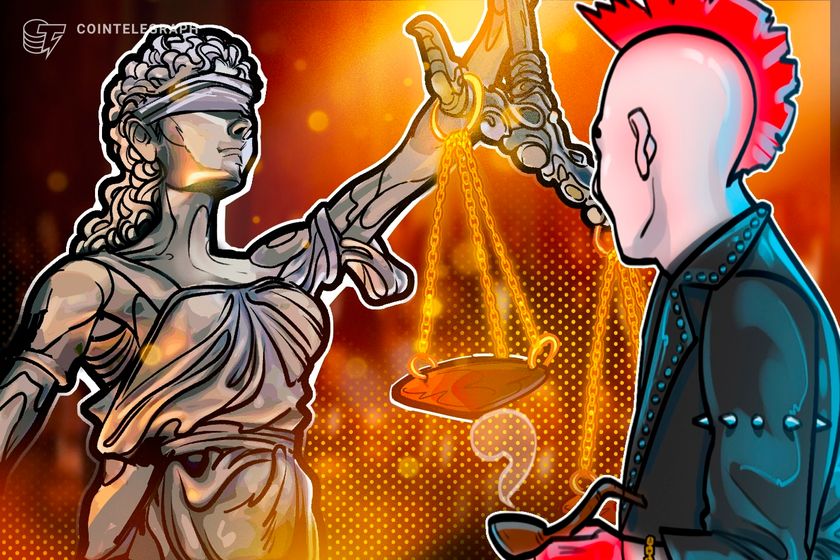Fear and Greed Index
Top 7 Gainers
| Cryptocurrency | Change in 24 Hours |
|---|---|
 Artificial Superintelligence Alliance (fet) Artificial Superintelligence Alliance (fet) | 8.75% |
| 5.38% | |
 JasmyCoin (jasmy) JasmyCoin (jasmy) | 3.62% |
| 3.43% | |
 Sei (sei) Sei (sei) | 2.43% |
 Tokenize Xchange (tkx) Tokenize Xchange (tkx) | 2.3% |
 Pi Network (pi) Pi Network (pi) | 2.23% |
Top 7 Losers
| Cryptocurrency | Change in 24 Hours |
|---|---|
 MANTRA (om) MANTRA (om) | -8.77% |
 Fartcoin (fartcoin) Fartcoin (fartcoin) | -7.33% |
| -7.16% | |
 Toncoin (ton) Toncoin (ton) | -4.4% |
 Celestia (tia) Celestia (tia) | -4.19% |
 Hyperliquid (hype) Hyperliquid (hype) | -3.03% |
 Aave (aave) Aave (aave) | -2.8% |
Strategy co-founder Michael Saylor has signaled that the company plans to acquire more Bitcoin (BTC) following a nearly two-week pause in purchases.
The companys


Opinion by: Max Giammario, founder and CEO of Kindred
The interfaces and user experience in Web3 tools are terrible, even more so when compared to their Web2 counterparts. This lackluster experience for Web3 is losing the attention of as many users as desired, and with how fast the ecosystem moves, these shortcomings are rarely paid attention to.
AI agents can be an excellent tool to overcome these weaknesses. Their potential to improve development and user experience is remarkable, although it has yet to reach its real potential. Once combined with emotional AI, which will enable us to understand contexts beyond their programming, we will see a quantum leap from Web3 tools to ordinary users.
Web3’s learning curve is very steep
Consider your first interactions with a Web3 wallet — a scary, difficult experience. Many people fear that, at any moment, they could make a mistake, which could mean losing money. This situation can be less uncomfortable if we add agents with emotional AI that can guide new users and provide personalized support, keeping people at ease during their learning process.
If the first interaction with Web3 is seamless in this way, adoption could grow. A better user experience would be a win-win for the entire industry, which suffers from having few users. Reaching a level of adoption of a Web2 tool would be a win for the ecosystem.
Emotional AI companions would make everything easier
With the potential that emotional AI agents have, they would facilitate the experience of new users, and they could serve as personal assistants to interact with the rest of the Web3 tools in a more autonomous, personalized way.
Emotional AI agents could act as motivational coaches, providing continuous, personalized and empathetic accompaniment that enables them to connect deeply with their users and guide them in the best practices to avoid significant losses in Web3.
Recent: Inside an AI-powered Web3 game’s race to 100 million users
These are just some of the most evaluated uses of Web3 today. The more applications it has in the future, the more potential is unlocked. Combining so much state-of-the-art technology, however, entails significant risks that must be considered in its development.
Implementing emotional AI in Web3 carries risks
Integrating emotional AI within the Web3 ecosystem could be very beneficial. Still, it must be considered that it entails risks that any AI has, plus what the use of Web3 implies. One of the most significant risks would be using personal information because, as an emotional AI, it will require more information from its users, which increases the danger of data leakage.
This same personalization could generate an unhealthy dependence on its emotional AI partner, so safeguards against this would have to be implemented. Even being so personalized, it will generate biased information, which will close the scope of the AI agent.
Considering the risks mentioned above, while the technology is under development, by the time emotional AI agents launch, developers can forge the path to reduce these risks and implement all the benefits of this technology.
Emotional AI is the key to greater adoption of Web3
AI tools have become more widespread at a rate we have not seen since the launch of the internet. The speed of adoption is because AI tools have become straightforward tools to facilitate any task. The next step is emotional AI agents, which allow for closer AI companions who can provide better support.
As complicated as the Web3 industry is, if these emotional AI companions became the standard in the ecosystem, all these tools would be available to any user. The Web3 adoption it would facilitate would be enormous, and all this value would be worth the risks.
Opinion by: Max Giammario, founder and CEO of Kindred.
This article is for general information purposes and is not intended to be and should not be taken as legal or investment advice. The views, thoughts, and opinions expressed here are the author’s alone and do not necessarily reflect or represent the views and opinions of Cointelegraph.


Bitcoin (BTC) hit an eleven-day high on April 13 as the crypto market relief rally closely tracked US financial policy changes.
BTC/USD 1-hour chart. Source: Cointelegraph/TradingView
Bitcoin traders say brace for more volatility
Data from Cointelegraph Markets Pro and TradingView showed BTC/USD reaching $86,000 for the first time since April 2.
The pair had reacted well to news that US President Donald Trump had decided to exclude certain key products from his ongoing trade tariffs against China.
Traditional markets are closed on weekends —creating lower-liquidity trading in crypto markets and raising the chance for price volatility— with Bitcoin subsequently dropping under $84,000.
With hours to go until the weekly close, BTC/USD was thus up 7% for the week, having started with a trip to new five-month lows.
Commenting, traders were cautious over BTC price strength.
Call me crazy but I don’t think I trust this breakout on $BTC.
— Roman (@Roman_Trading) April 12, 2025
Low volume, overbought stoch, and on a weekend.
If we can remain over 84k through Monday I’ll look for higher but for now this seems sketchy. pic.twitter.com/qKVdYAOYPJ
Daan Crypto Trades noted the ongoing interplay with the 200-day exponential moving average (EMA) at $85,000.
“This is however still a weekend move so far and we know next week will be volatile again with news regarding tariffs and the first big tech earnings coming up,” part of a post on X read.
BTC/USD 1-day chart with 200 EMA. Source: Cointelegraph/TradingView
Well-known trader Peter described the rebound from the lows as looking “more corrective than it does impulsive.”
BTC/USD 2-hour chart. Source: Peter Brandt/X
Popular trader and analyst Rekt Capital meanwhile saw the true hurdle to a Bitcoin bull market rebound coming in the form of a stubborn long-term daily downtrend.
“Bitcoin has Daily Closed above the Downtrend. Thus, breakout confirmation is underway,” one of his latest X updates explained alongside an illustrative chart.
“However BTC has previously Daily Closed above the Downtrend but failed its retest (a few of the red circles). Retest needs to be successful and it is in progress.”
BTC/USD 1-day chart. Source: Rekt Capital/X
As Cointelegraph reported, the daily downtrend, in place since late 2024, is earmarked as a key hurdle for bulls to overcome.
Related: Bollinger Bands creator says Bitcoin forming 'classic' floor near $80K
RSI bullish divergence still in play
Another post flagged promising signals on Bitcoin’s relative strength index (RSI) indicator.
A classic leading indicator, RSI continued to print another bullish divergence with price on daily timeframes.
“Bitcoin is developing yet another Higher Low on the RSI while forming Lower Lows on the price,” Rekt Capital summarized.
“Overall, throughout the cycle Bitcoin has formed Bullish Divergences like this on a few occasions already. Each Bull Div preceded reversals to the upside.”
BTC/USD 1-day chart with RSI data. Source: Rekt Capital/X
This article does not contain investment advice or recommendations. Every investment and trading move involves risk, and readers should conduct their own research when making a decision.
Lomond School, a private institution in Scotland, will begin accepting Bitcoin for tuition payments and is collaborating with Bitcoin author Saifedean Ammous to introduce a new curriculum focused on Bitcoin and Austrian economics.
Ammous, author of The Bitcoin Standard, is developing an educational curriculum combining the principles of Bitcoin (BTC) and Austrian economics.
“Im


A non-fungible token (NFT) trader could face up to six years in prison after pleading guilty to underreporting nearly $13 million in profits from trading CryptoPunks, according to the US Attorney’s Office for the Middle District of Pennsylvania.
Waylon Wilcox, 45, admitted to filing false income tax returns for the 2021 and 2022 tax years. The former CryptoPunk investor pleaded guilty on April 9 to two counts of filing false individual income tax returns, federal prosecutors said in an April 11 press release.
Back in April 2022, Wilcox filed a false individual income tax return for the tax year 2021, which underreported his income tax by roughly $8.5 million and reduced his tax due by approximately $2.1 million.
In October 2023, Wilcox filed another false individual tax income return for the fiscal year of 2022, underreporting his income tax by an estimated $4.6 million and reducing his tax due by nearly $1.1 million.
Wilcox pleads guilty to false tax filing, press release. Source: Attorney’s Office for the Middle District of Pennsylvania
“The total maximum penalty under federal law for these offenses is up to six years of imprisonment, a term of supervised release following imprisonment, and a fine,” according to the statement. However, the exact details and timing of his sentence remain unclear.
Related: NFT trader sells CryptoPunk after a year for nearly $10M loss
The trader bought and sold 97 pieces of the CryptoPunk NFT collection, the industry’s largest NFT collection, with a $687 million market capitalization.
Source: CryptoPunks
In 2021, Wilcox sold 62 CryptoPunk NFTs for a gain of about $7.4 million but reported significantly less on his taxes. In 2022, he sold 35 more CryptoPunks for $4.9 million. The Department of Justice said Wilcox intentionally selected “no” when asked if he had engaged in digital asset transactions on both filings.
“IRS Criminal Investigation is committed to unraveling complex financial schemes involving virtual currencies and NFT transactions designed to conceal taxable income,” Philadelphia Field Office Special Agent in charge Yury Kruty said, adding:
“In today’s economic environment, it’s more important than ever that the American people feel confident that everyone is playing by the rules and paying the taxes they owe.”
The case was investigated by the Internal Revenue Service (IRS) and the Criminal Investigation Department.
Related: CZ claps back against ‘baseless’ US plea deal allegations
Crypto tax rules gain traction
Crypto tax laws attracted interest worldwide in June 2024 after the IRS issued a new crypto regulation making US crypto transactions subject to third-party tax reporting requirements for the first time.
Since January, centralized crypto exchanges (CEXs) and other brokers have been required to report the sales and exchanges of digital assets, including cryptocurrencies.
On April 10, US President Donald Trump signed a joint congressional resolution to overturn a Biden administration-era legislation that would have required decentralized finance (DeFi) protocols to also report transactions to the IRS.
Set to take effect in 2027, the so-called IRS DeFi broker rule would have expanded the tax authority’s existing reporting requirements to include DeFi platforms, requiring them to disclose gross proceeds from crypto sales, including information regarding taxpayers involved in the transactions.
However, some crypto regulatory advisers believe that stablecoin and crypto banking legislation should be a priority above new tax legislation in the US.
A “tailored regulatory approach” for areas including securities laws and removing “obstacles in banking” is a priority for US lawmakers with “more upside” for the industry, Mattan Erder, general counsel at layer-3 decentralized blockchain network Orbs, told Cointelegraph.
Magazine: SEC’s U-turn on crypto leaves key questions unanswered


AI is transforming how people interact with financial markets, and cryptocurrency trading is no exception. With tools like OpenAI’s Custom GPTs, it is now possible for beginners and enthusiasts to create intelligent trading bots capable of analyzing data, generating signals and even executing trades.
This guide analyzes the fundamentals of building a beginner-friendly AI crypto trading bot using Custom GPTs. It covers setup, strategy design, coding, testing and important considerations for safety and success.
What is a custom GPT?
A custom GPT (generative pretrained transformer) is a personalized version of OpenAI’s ChatGPT. It can be trained to follow specific instructions, work with uploaded documents and assist with niche tasks, including crypto trading bot development.
These models can help automate tedious processes, generate and troubleshoot code, analyze technical indicators and even interpret crypto news or market sentiment, making them ideal companions for building algorithmic trading bots.
What you’ll need to get started
Before creating a trading bot, the following components are necessary:
OpenAI ChatGPT Plus subscription (for access to GPT-4 and Custom GPTs).
A crypto exchange account that offers API access (e.g., Coinbase, Binance, Kraken).
Basic knowledge of Python (or willingness to learn).
A paper trading environment to safely test strategies.
Optional: A VPS or cloud server to run the bot continuously.
Did you know? Python’s creator, Guido van Rossum, named the language after Monty Python’s Flying Circus, aiming for something fun and approachable.
Step-by-step guide to building an AI trading bot with custom GPTs
Whether you’re looking to generate trade signals, interpret news sentiment or automate strategy logic, the below step-by-step approach helps you learn the basics of combining AI with crypto trading.
With sample Python scripts and output examples, you'll see how to connect a custom GPT to a trading system, generate trade signals and automate decisions using real-time market data.
Step 1: Define a simple trading strategy
Start by identifying a basic rule-based strategy that is easy to automate. Examples include:
Buy when Bitcoin’s (BTC) daily price drops by more than 3%.
Sell when RSI (relative strength index) exceeds 70.
Enter a long position after a bullish moving average convergence divergence (MACD) crossover.
Trade based on sentiment from recent crypto headlines.
Clear, rule-based logic is essential for creating effective code and minimizing confusion for your Custom GPT.
Step 2: Create a custom GPT
To build a personalized GPT model:
Visit chat.openai.com
Navigate to Explore GPTs > Create
Name the model (e.g., “Crypto Trading Assistant”)
In the instructions section, define its role clearly. For example:
“You are a Python developer specialized in crypto trading bots.”
“You understand technical analysis and crypto APIs.”
“You help generate and debug trading bot code.”
Optional: Upload exchange API documentation or trading strategy PDFs for additional context.
Step 3: Generate the trading bot code (with GPT’s help)
Use the custom GPT to help generate a Python script. For example, type:
“Write a basic Python script that connects to Binance using ccxt and buys BTC when RSI drops below 30. I am a beginner and don’t understand code much so I need a simple and short script please.”
The GPT can provide:
Code for connecting to the exchange via API.
Technical indicator calculations using libraries like ta or TA-lib.
Trading signal logic.
Sample buy/sell execution commands.
Python libraries commonly used for such tasks are:
ccxt for multi-exchange API support.
pandas for market data manipulation.
schedule or apscheduler for running timed tasks.
To begin, the user must install two Python libraries: ccxt for accessing the Binance API, and ta (technical analysis) for calculating the RSI. This can be done by running the following command in a terminal:
pip install ccxt ta
Next, the user should replace the placeholder API key and secret with their actual Binance API credentials. These can be generated from a Binance account dashboard. The script uses a five-minute candlestick chart to determine short-term RSI conditions.
Below is the full script:
====================================================================
import ccxt
import pandas as pd
import ta
# Your Binance API keys (use your own)
api_key = 'YOUR_API_KEY'
api_secret = 'YOUR_API_SECRET'
# Connect to Binance
exchange = ccxt.binance({
'apiKey': api_key,
'secret': api_secret,
'enableRateLimit': True,
})
# Get BTC/USDT 1h candles
bars = exchange.fetch_ohlcv('BTC/USDT', timeframe='1h', limit=100)
df = pd.DataFrame(bars, columns=['timestamp', 'open', 'high', 'low', 'close', 'volume'])
# Calculate RSI
df['rsi'] = ta.momentum.RSIIndicator(df['close'], window=14).rsi()
# Check latest RSI value
latest_rsi = df['rsi'].iloc[-1]
print(f"Latest RSI: {latest_rsi}")
# If RSI < 30, buy 0.001 BTC
if latest_rsi < 30:
order = exchange.create_market_buy_order('BTC/USDT', 0.001)
print("Buy order placed:", order)
else:
print("RSI not low enough to buy.")
====================================================================
Please note that the above script is intended for illustration purposes. It does not include risk management features, error handling or safeguards against rapid trading. Beginners should test this code in a simulated environment or on Binance’s testnet before considering any use with real funds.
Also, the above code uses market orders, which execute immediately at the current price and only run once. For continuous trading, you’d put it in a loop or scheduler.
Images below show what the sample output would look like:
The sample output shows how the trading bot reacts to market conditions using the RSI indicator. When the RSI drops below 30, as seen with “Latest RSI: 27.46,” it indicates the market may be oversold, prompting the bot to place a market buy order. The order details confirm a successful trade with 0.001 BTC purchased.
If the RSI is higher, such as “41.87,” the bot prints “RSI not low enough to buy,” meaning no trade is made. This logic helps automate entry decisions, but the script has limitations like no sell condition, no continuous monitoring and no real-time risk management features, as explained previously.
Step 4: Implement risk management
Risk control is a critical component of any automated trading strategy. Ensure your bot includes:
Stop-loss and take-profit mechanisms.
Position size limits to avoid overexposure.
Rate-limiting or cooldown periods between trades.
Capital allocation controls, such as only risking 1–2% of total capital per trade.
Prompt your GPT with instructions like:
“Add a stop-loss to the RSI trading bot at 5% below the entry price.”
Step 5: Test in a paper trading environment
Never deploy untested bots with real capital. Most exchanges offer testnets or sandbox environments where trades can be simulated safely.
Alternatives include:
Running simulations on historical data (backtesting).
Logging “paper trades” to a file instead of executing real trades.
Testing ensures that logic is sound, risk is controlled and the bot performs as expected under various conditions.
Step 6: Deploy the bot for live trading (Optional)
Once the bot has passed paper trading tests:
Replace test API keys: First, replace your test API keys with live API keys from your chosen exchange’s account. These keys allow the bot to access your real trading account. To do this, log in to exchange, go to the API management section and create a new set of API keys. Copy the API key and secret into your script. It is crucial to handle these keys securely and avoid sharing them or including them in public code.
Set up secure API permissions (disable withdrawals): Adjust the security settings for your API keys. Make sure that only the permissions you need are enabled. For example, enable only “spot and margin trading” and disable permissions like “withdrawals” to reduce the risk of unauthorized fund transfers. Exchanges like Binance also allow you to limit API access to specific IP addresses, which adds another layer of protection.
Host the bot on a cloud server: If you want the bot to trade continuously without relying on your personal computer, you’ll need to host it on a cloud server. This means running the script on a virtual machine that stays online 24/7. Services like Amazon Web Services (AWS), DigitalOcean or PythonAnywhere provide this functionality. Among these, PythonAnywhere is often the easiest to set up for beginners, as it supports running Python scripts directly in a web interface.
Still, always start small and monitor the bot regularly. Mistakes or market changes can result in losses, so careful setup and ongoing supervision are essential.
Did you know? Exposed API keys are a top cause of crypto theft. Always store them in environment variables — not inside your code.
Ready-made bot templates (starter logic)
The templates below are basic strategy ideas that beginners can easily understand. They show the core logic behind when a bot should buy, like “buy when RSI is below 30.”
Even if you’re new to coding, you can take these simple ideas and ask your Custom GPT to turn them into full, working Python scripts. GPT can help you write, explain and improve the code, so you don’t need to be a developer to get started.
In addition, here is a simple checklist for building and testing a crypto trading bot using the RSI strategy:
Just choose your trading strategy, describe what you want, and let GPT do the heavy lifting, including backtesting, live trading or multi-coin support.
RSI strategy bot (buy Low RSI)
Logic: Buy BTC when RSI drops below 30 (oversold).
if rsi < 30:
place_buy_order()
Used for: Momentum reversal strategies.
Tools: ta library for RSI.
2. MACD crossover bot
Logic: Buy when MACD line crosses above signal line.
if macd > signal and previous_macd < previous_signal:
place_buy_order()
Used for: Trend-following and swing trading.
Tools: ta.trend.MACD or TA-Lib.
3. News sentiment bot
Logic: Use AI (Custom GPT) to scan headlines for bullish/bearish sentiment.
if “bullish” in sentiment_analysis(latest_headlines):
place_buy_order()
Used for: Reacting to market-moving news or tweets.
Tools: News APIs + GPT sentiment classifier.
Risks concerning AI-powered trading bots
While trading bots can be powerful tools, they also come with serious risks:
Market volatility: Sudden price swings can lead to unexpected losses.
API errors or rate limits: Improper handling can cause the bot to miss trades or place incorrect orders.
Bugs in code: A single logic error can result in repeated losses or account liquidation.
Security vulnerabilities: Storing API keys insecurely can expose your funds.
Overfitting: Bots tuned to perform well in backtests may fail in live conditions.
Always start with small amounts, use strong risk management and continuously monitor bot behavior. While AI can offer powerful support, it’s crucial to respect the risks involved. A successful trading bot combines intelligent strategy, responsible execution and ongoing learning.
Build slowly, test carefully and use your Custom GPT not just as a tool — but also as a mentor.


Bitcoin (BTC) holders were the first to point out flaws in the United States economic data and position themselves for the potential upside, says crypto entrepreneur Anthony Pompliano.
“Bitcoiners were the first large-scale group to recognize the economic data was wrong, and they figured out a way to financially capture upside if they were right,” Pompliano said in an April 12 X post.
Pompliano foresees more will realize data is “inaccurate”
“The unspoken secret as to why so many finance folks are wrong in their analysis of the tariffs is because the finance folks believe the government data,” he added.
Amid the widespread uncertainty and ongoing fear over US President Donald Trump’s imposed tariffs, Pompliano questioned the accuracy of US inflation figures, job numbers, and GDP statistics. He added that “eventually everyone else will realize the data is inaccurate.”
It comes after Pompliano pointed out in a March 20 LinkedIn post, US Treasury Secretary Scott Bessent’s appearance on the All-In podcast, where Bessent was asked directly if he trusted the data — and replied, “no.”
“Even the Treasury Secretary has now publicly acknowledged he doesn’t believe the data. He says we must listen to the people rather than blindly follow the government data reports.”
Concerns about the reliability of US economic data have been brewing for a while. A July 2024 report argued that new approaches are needed to “ensure government statistics remain dependable.”
Source: Anthony Pompliano
It comes as ongoing concerns over Trump’s imposed tariffs have led some crypto analysts to reinforce the idea that Bitcoin could outlast the US dollar in the long run.
Bitwise Invest head of alpha strategies Jeff Parks said on April 9 that there is a “higher chance Bitcoin survives over the dollar in our lifetime after today.”
Over the past five days, the US dollar index (DXY) has dropped 3.19%, currently sitting at 99.783 at the time of publication, according to TradingView data.
The US dollar index is down 8.06% since the beginning of 2025. Source: TradingView
Several Wall Street analysts were under the belief that Trump’s imposed tariffs would bolster the US dollar, according to a recent Wall Street Journal report.
Pompliano said, “The mainstream finance conversation has become an intellectual boondoggle where most people regurgitate ill-informed takes based on bad data.”
Analysts recently pointed out Bitcoin’s recent breakaway from stocks
Analysts even pointed out that while the stock market was “tanking” on April 4 amid tariff uncertainty, Bitcoin didn’t decline as much as expected. During periods of macroeconomic uncertainty, Bitcoin and crypto assets have historically been more volatile than the stock market.
Related: Bitcoin price soars to $83.5K — Have pro BTC traders turned bullish?
On April 4, Cointelegraph reported that Bitcoin was steady above the $82,000 level, and as US equities markets collapsed, Bitcoin rallied to $84,720, reflecting price action, which is uncharacteristic of the norm.
Meanwhile, former BitMEX CEO Arthur Hayes said Bitcoin may be entering what he calls “up only mode,” as a deepening crisis in the US bond market potentially drives investors away from traditional haven assets and toward alternative stores of value.
Magazine: Memecoin degeneracy is funding groundbreaking anti-aging research
Large Transactions
| Cryptocurrency | Sender | Recipient | Amount (USD) | When |
|---|---|---|---|---|
| Unknown | Unknown | $12499070 | 2 minutes ago | |
| Binance | Binance | $1268701 | 4 minutes ago | |
| Binance | Unknown | $2986695.8 | 5 minutes ago | |
| Unknown | Bybit | $1913322.6 | 7 minutes ago | |
| Unknown | Unknown | $2617172.2 | 7 minutes ago | |
| Unknown | Unknown | $4618919 | 7 minutes ago | |
| Unknown | Unknown | $4630992 | 7 minutes ago | |
| Unknown | Unknown | $4524827 | 7 minutes ago |
Major Economic Events Today
| Time | Event | Country |
|---|---|---|
| 09:30:00 | Wholesale price index | India |
| 02:40:00 | Boosty's performance, member FOMC | United States |
| 02:01:00 | Retail sales volume from BRC | Britain |
| 01:00:00 | Speech by FOMC Harker | United States |
| 20:00:00 | Speech by K. Waller from the Fed | United States |
| 19:48:41 | Balance Balance Balance Balance (USD ) | China |
| 19:48:39 | Export volume | China |
| 19:48:39 | The volume of imports | China |
| 15:30:00 | The volume of wholesale sales | Canada |
| 15:00:00 | The volume of loans issued | China |
| 14:25:00 | Publishing of the Central Bank's report on market trends | Brazil |
| 14:00:00 | Monthly OPEC report | United States |
| 09:30:00 | Manufacturers' prices (ppi ) Switzerland | Switzerland |
| 07:30:00 | The volume of industrial production | Japan |